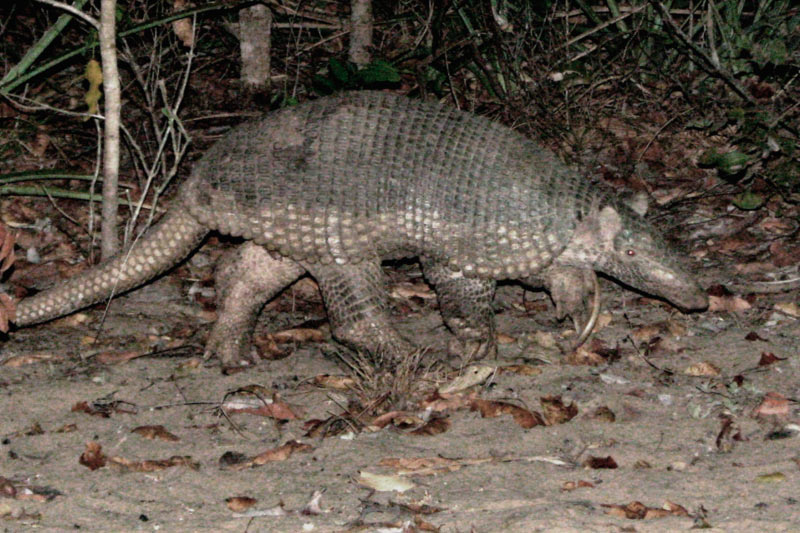The red brocket as a species has not been studied in any depth, and therefore not much data has been accumulated.
Click to learn more
The red brocket is the largest species of the genus Mazama. The taxonomy of this species is confusing, with some studies suggesting that the American Mazama should be divided into several other species.
Distribution
The red brocket occurs in almost all of South America, from Venezuela to northern Argentina, and almost all of Brazil, with the exception of some states in the northeast.
Features
Reddish in color, the red brocket often has white spots below the tail and in the inner regions of the limbs and ears. The animal weighs approximately 30 kilograms but may reach more than 50 kilograms. It measures between 90 and 145 centimeters in length, with withers height of 70 centimeters.
Behavior
Red brockets have daytime, solitary habits, although they may form pairs during the breeding season. They prefer to forage in forested areas close to water because in this way they can escape swimming predators. They adapt well to life in the forest.
Food
Red brockets are herbivores, feeding mainly on fruits, seeds, fungi, flowers and buds. They are able to eat leaves and grass when other foods are scarce.
Reproduction
The average length of gestation is seven months, after which females give birth to one offspring at a time. Cubs are born with irregular white stripes distributed over the back. There is no specific season for reproduction, which may occur throughout the year.
Conservation
The species has been listed as “data deficient” by both the national list of ICMBio and the IUCN, so it is not possible to state the degree to which the red brocket is threatened. Sport and subsistence hunting, habitat fragmentation, and the advancement of cities form the main threats to this species.

















